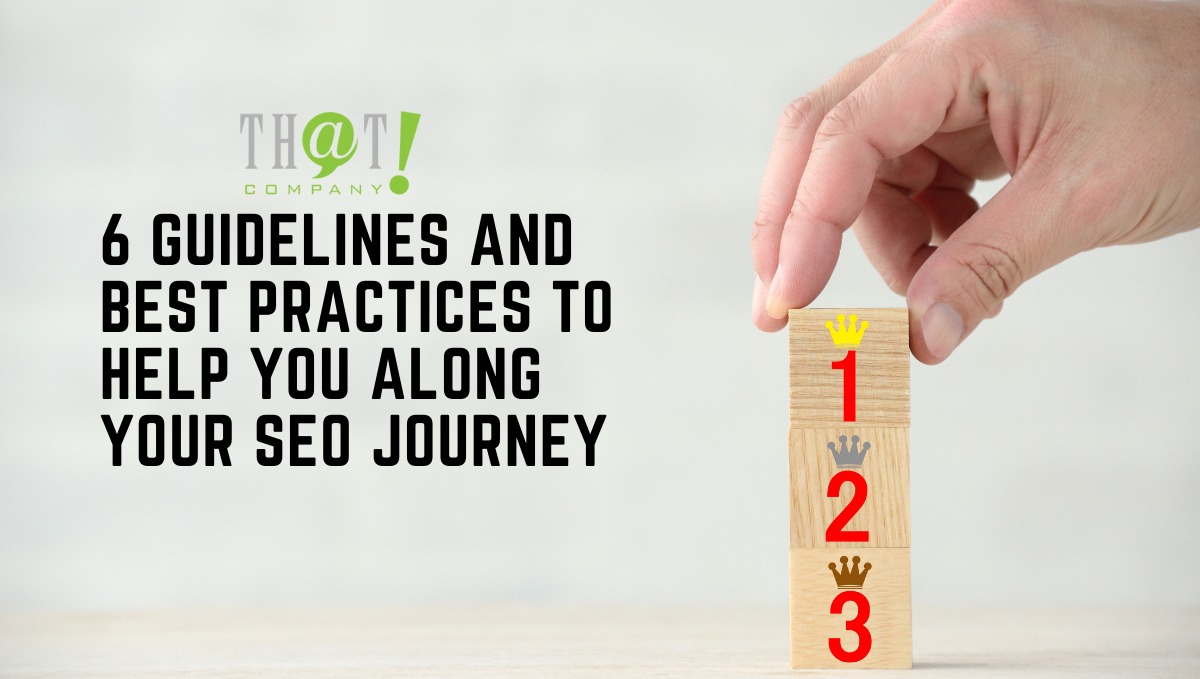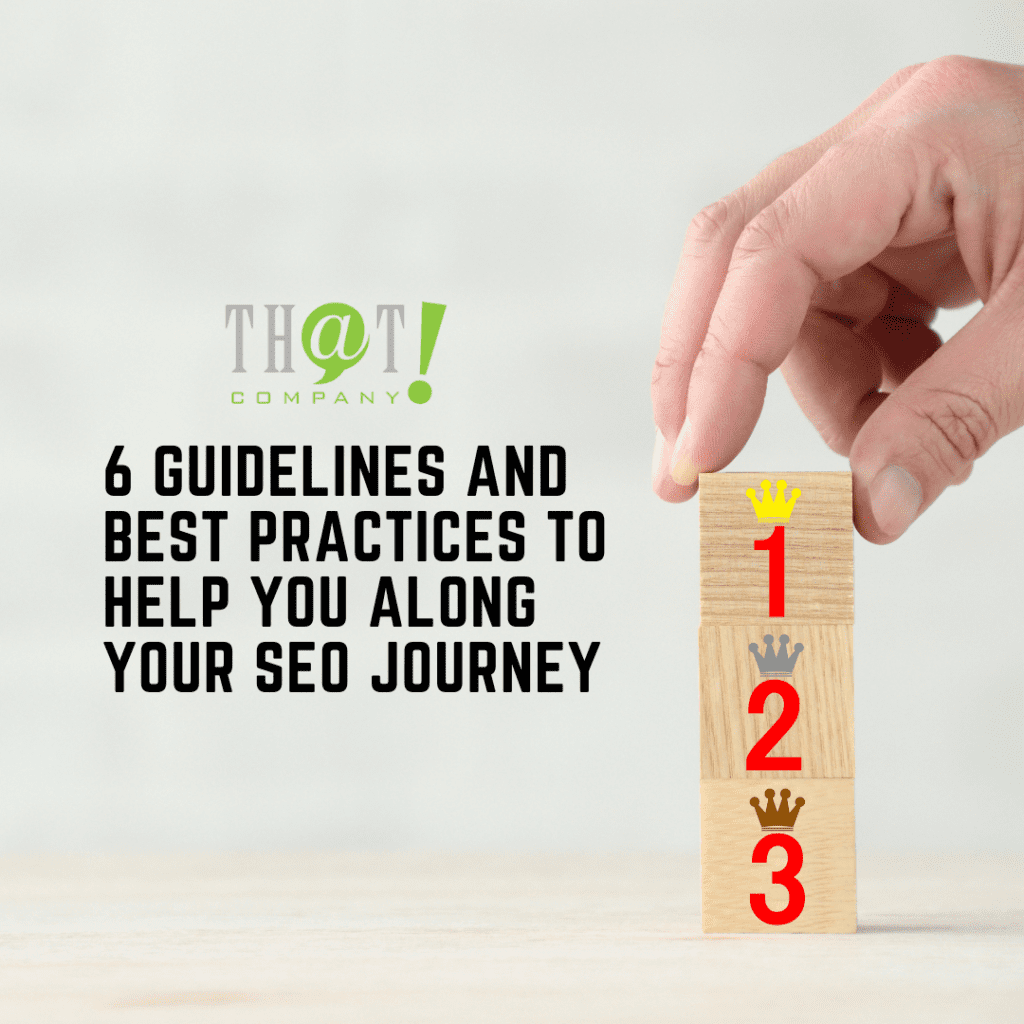
You wouldn’t go on a road trip without checking your engine oil, so you probably wouldn’t want to drive around with old tires either. Similarly, successful SEOs take the time to check their website for key technical issues regularly. Doing so keeps you running smoothly for your customers and helps your other marketing efforts.
P.S. Before we begin if you run a digital marketing agency using our white label services or our local SEO solutions can be a great investment. In essence, white label SEO services are those that you can use to better provide SEO service to your clients while getting all the credit under your agency’s brand name. Alright, let’s dive in.
Below is a list of 6 guidelines and best practices to help you along your SEO journey.
#1: Think About Your Website’s Quality
Quality matters! You can’t just update your website occasionally, and not pay attention to the basics. It’s essential to think about your website’s user experience before everything else, especially for your SEO journey. If you have the greatest content in the world, but your site is hard to navigate, has poor load speed times, and/or broken links, it will be harder to attract new customers. This is why keeping the site up to date and doing a periodic check-up with a site audit tool will be helpful. You’ll find specific technical issues that the competition has already fixed, but you’ve left open. If you’re not doing this you might lose an important prospect/customer because your website is not performing well.
#2: Look Out for The Essential Technical Issues In Your SEO Journey
 While you should be looking out for technical issues, others regularly affect your website’s performance. Check these out to ensure that they are not causing your visitors to leave without doing business. These are eight areas that SEOs should be monitoring and checking regularly.
While you should be looking out for technical issues, others regularly affect your website’s performance. Check these out to ensure that they are not causing your visitors to leave without doing business. These are eight areas that SEOs should be monitoring and checking regularly.
Server response time – This is how quickly the server responds when the visitor requests a page. Ideally, per Google’s recommendations you should aim to have a server response time of lower than 200 milliseconds, 100 milliseconds being ideal, and everything over 500ms is an issue to solve.
Page load time – Page load time is how long it takes for your website to respond when visitors request a page. The faster the better however you should aim to have a load time of fewer than 2 seconds, while a page load time between 2-4 seconds is seen as acceptable.
Page size – Page size refers to the amount of data your page loads. A page size of more than 2 MB is too big and will affect SEO performance. If a page is slow, it might be due to the large file size.
Cacheability – This refers to whether the cache is set to public or private by default. For most websites, it’s best to keep it set to public so that anyone else on the internet can view the cached version.
Cached pages – This refers to whether or not a page is indexed in and cached by search engines like Google. If a page is not cached, you will lose out on possible traffic.
Citations – Citations are links from other websites to your website. There should be no 404, soft 404 (which means the page exists but Google identifies it as a 404), and other “broken” links. If you have links pointing to your site, but that content is no longer there don’t miss out on the link, make sure you 301 redirect it to an appropriate replacement (not just back to the homepage)
Robots.txt – An important part of technical SEO is knowing what robots.txt is and how to set it up correctly. If you don’t know what you’re doing you could accidentally tell Google not to index your site completely destroying your rankings. There are three different categories of robot rules: 1) ignore all, 2) disallow all, and 3) disallow a list of pages.
XML sitemap – If you have an XML sitemap, it should be updated and submitted to the search engines. It is worth creating one for your website if you don’t have one. It’s very important that your sitemap stays clean! Having a sitemap filled with pages that are no longer there Google will not look favorably upon.
#3: Test Your Pages
If you have multiple pages on your website, it’s important to check them to ensure there are no issues. Here are a few ways to test your pages:
Enable robots to filter and exclude certain pages – If you have a category or keyword that is filtered during the crawl, you may not want it appearing on your site. Double-check that the pages you want to be indexed and those you don’t want are excluded.
Perform a Site Audit – Use a Site Audit tool to perform a comprehensive audit to ensure there are no hidden or underlining issues.
Use Google Search Console – Google Search Console offers numerous helpful features for SEO professionals. One of the best features is testing to see if pages are indexed or blocked by the robots. If a page is not indexed that should be then start there!
[bctt tweet=”Quality matters! You can’t just update your website occasionally, and not pay attention to the basics.” username=”ThatCompanycom”]#4: Optimizing Your Meta Data
 When optimizing the meta tags, it’s essential to ensure that your top-level pages are taken care of first, followed by secondary pages. Optimizing your metadata can be a quick way to enhance what a user sees in Google about your page before they click through, a good meta title and meta description can be the difference between an impression and getting the click! It’s also important to remember that the keyword you’re targeting should appear once in the title and somewhere in the meta description.
When optimizing the meta tags, it’s essential to ensure that your top-level pages are taken care of first, followed by secondary pages. Optimizing your metadata can be a quick way to enhance what a user sees in Google about your page before they click through, a good meta title and meta description can be the difference between an impression and getting the click! It’s also important to remember that the keyword you’re targeting should appear once in the title and somewhere in the meta description.
The meta title should be unique and not overly long but still descriptive. Long titles will make it difficult for users to know what they are looking at especially if Google truncates your title. Place your main keyword toward the beginning of your meta title.
The meta description is similar. You have the same requirements of being unique and not overly long, but still descriptive. However, you have more room to use a few more keywords.
#5: Avoid Duplicate Content and Loopholes
Many times when we bring on a SEO client we find duplicate content issues that are severely hampering their ability to win rankings. We start by erradicating content that is word for word duplicates. At the same time, some content may just overlap in which case changing the content and deciding which piece will be targeting the keyword, while the secondary piece of content supports the core content with an internal link is very helpful. You want to make sure you avoid duplicate content by creating unique and high-quality content for each page of your website.
Duplicate content – Duplicate content is when your site has duplicated content on your other pages. This can cause penalties and will also make it difficult to rank higher.
Duplicate Meta Data – If you are using the same metadata for multiple pages and using the same keywords, this could be considered duplicate metadata. It would be best to make sure that there is a distinction between each page, including the metadata.
#6: Your SEO Journey: Keyword Research
 The keyword research process can be very time-consuming, but ultimately, it’s crucial. Nothing will help you more than knowing what keywords to use for your site and how to go about finding them. Here are some helpful tips for keyword research:
The keyword research process can be very time-consuming, but ultimately, it’s crucial. Nothing will help you more than knowing what keywords to use for your site and how to go about finding them. Here are some helpful tips for keyword research:
Organic Keyword Research – First, perform detailed research on the products or services you provide. Find out what people are searching for. Always focus on long-tail keywords to gain a foothold in the industry, but also make sure that you don’t forget about some of the more important and more popular keywords so you can begin to build towards winning them.
Long-tail Keywords – Long-tail keywords are a great way to ensure that you have the right keywords in your SEO campaigns. These include keywords that are three or more words long. Start by focusing on the longer tail, then move on to the more popular keywords. Longer tail phrases often have lower search volumes, but they also typically have less competition!
Focus Keyword – A Focus keyword is a term you can use to focus on one keyword for SEO purposes. This is especially helpful if you want to rank for one specific term but not many others. A SEO Campaign is not built on 1 keyword alone, but if there is one particular phrase you want to win, making sure your content sends internal links to that content will help!
Keyword Suggestions – Another helpful way to find keywords is to use keyword suggestions. There are a lot of tools that can help you find keywords. For example, Moz Pro Keyword Suggest, WordStream, and SEMRush can help, but if you are doing SEO with a limited budget, looking at the “related searches” at the bottom of a Google search result page will help you. 🙂
There you go those are six guidelines and best practices to help you along your SEO journey. These aren’t all of them, mind you. SEO is an ever-changing and evolving space where we work to provide users with what they’re searching for and improve customer acquisition for our clients. Hope you found this helpful! 🙂
Written by, Doyle Clemence






























